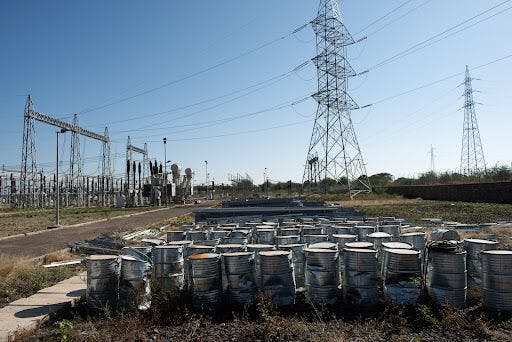Ethiopian Electric Power (EEP) generated 13 million USD in July and August from the 232.76 million kWh of electricity it exported to Sudan and Djibouti.
The income fell short of the plan by almost $5 million USD.
The national electric power agency plans to generate 147 million USD from power sales for neighboring countries of Sudan, Kenya, and Djibouti in the year.
“Due to the declining demand from Sudan, EEP can not make the target foreign currency income,” Moges Mekonen, Public Relations Manager of EEP told Addis Zeybe.
In addition to Sudan and Djibouti, which have a deal to buy electric power from Ethiopia, Kenya will be a new customer in the coming November, according to Moges.
The agreement reached between the Ethiopian and Kenyan governments in July will allow EEP to provide 200 MW up to increasing the amount to 400 MW.
“Testing works are being undertaken on the transmission line which was built at the cost of 183 million USD to connect the two countries,” Moges said.
It can be learned that South Sudan and Somaliland have also requested to buy electric power. Building infrastructures to connect the countries, and signing agreements based on recommendations from technical teams in the two countries is being expected.
EEP believes the country’s electric power export will prospectively attain more customer countries and increase the amount of power transmission.
“We have convenient situations which just need some effort,” said the PR manager.
“For instance, Aisha, an area 20-30 KM far from the border of Somaliland is already equipped with electric transmission infrastructure.”
Moges underscored that the government always gives priority to providing power for local households and industries uncompromisingly regardless of its export venture.
In this regard, the expected amount of water in the winter season of 2019/20 year in Ethiopia was not as usual. Thus, hydroelectric dams were not able to obtain adequate that forced EEP to halt the power export to Sudan that year and distribute power to the nation in shifts.
According to EEP, Ethiopia is currently exporting an average of 7% out of its total power generating capacity, which is expected to reach around 10% when concluding new export agreements.
The current deal with Sudan is to provide 100 MW. However, the government of Sudan has expressed its interest to raise the amount to 1,200 MW.
“Raising the amount of power export will though be dictated by EEP’s capacity of meeting national demands. Currently, the electric power demand is increasing from 13 to 15% annually, so we first need to deliver this every year,” Moges Mekonnen told Addis Zeybe.


